The
UMAPJournal
93
.
FL 32547
jmcargal@gmail.com
rd
�
2018
Vol. 39, No. 3
Table of Contents
Publisher’s Editorial
What Good Are Contests?
Solomon A. Garfunkel ...................................................................237
Editor’s Note
Paul J. Campbell ............................................................................240
MCM Modeling Forum
Results of the 2018 Mathematical Contest in Modeling
Patrick J. Driscoll ...........................................................................241
Wave Goodbye to Poor Reception
Marc Thomson, Derek Gorthy, and Christine Reilly .........................263
Judges’ Commentary: Multi-Hop HF Radio Propagation
Joanna Bieri and Kelly Black...........................................................287
How Many Languages?
Jiqun Chu, Jinfei Zhu, and Lingyun Feng ........................................295
Judges’ Commentary: How Many Languages?
William P. Fox and Robert E. Burks .................................................313
Better to Marry Renewables than to
Burn Fossil Fuels in Border States
Aimee Maurais and Arianna Krinos................................................321
Judges’ Commentary: The Southwest States’ Energy Compact
Katie Oliveras, Stacey Hancock, and David H. Olwell ......................343
�
Publisher’s Editorial
237
Publisher’s Editorial
What Good Are Contests?
Solomon A. Garfunkel
Executive Director
COMAP, Inc.
175 Middlesex Turnpike, Suite 3B
Bedford , MA 01730–1459
s.garfunkel@comap.com
Introduction
Since 1985, we have run modeling contests. In fact, COMAP now ad-
ministers the MCM R�/ICM R� contests at the undergraduate level as well
as HiMCM R� and IMMC R� at the high school levels All told, more than
23,000 teams and well over 60,000 students competed this past year in one
or more of these. COMAP is clearly in the contest business!
In what ways does this make sense? After all, we do not believe that
mathematical modeling is a competitive sport, and we certainly do not
wish to promote it as such. Our original proposal to the Department of Ed-
ucation’s Fund for the Improvement of Post-Secondary Education (FIPSE),
and every public statement we have made since, all clearly state that the
purpose of our contests is to promote the teaching and learning of mathematical
modeling and applications.
After all these years, it’s fair to ask whether this is working, or— more
generally—what has been the result of all of this work?
Serendipity in Teamwork
I should begin by mentioning a completely unplanned effect. A num-
ber of years ago, we began collecting data on the gender of our contest
participants. Figure 1 shows those results from 2010 to the present.
We note two things:
The UMAP Journal 39 (3) (2018) 237–240. c�Copyright 2018 by COMAP, Inc. All rights reserved.
Permission to make digital or hard copies of part or all of this work for personal or classroom use
is granted without fee provided that copies are not made or distributed for profit or commercial
advantage and that copies bear this notice. Abstracting with credit is permitted, but copyrights
for components of this work owned by others than COMAP must be honored. To copy otherwise,
to republish, to post on servers, or to redistribute to lists requires prior permission from COMAP.
�
238 The UMAP Journal 39.3 (2018)
Male vs. Female Students
35000
30000
25000
20000
15000
10000
5000
0
0
1
0
2
1
1
0
2
2
1
0
2
3
1
0
2
4
1
0
2
5
1
0
2
6
1
0
2
7
1
0
2
8
1
0
2
Figure 1. Male (blue, on left) and female (pink, on right) participants in the MCM/ICM from 2010
through 2018.
Female
Male
• the percentage of female participants has increased each year since we
began collecting the data, and
• the percentage of women on the Outstanding teams in 2018 is precisely
the same percentage (43%) as that of all female participants.
This year, COMAP and Stanford University jointly funded a study of
this phenomenon with an eye to understanding why female participation
in COMAP contests is so vastly different from that on more standard math-
ematics contests. The work, conducted by Prof. Jo Boaler and her team,
was reported on at Mathfest in Denver in August 2018 and will be reported
on again at the Joint Mathematics Meetings in Baltimore in January 2019.
There are clearly a number of aspects of the contests that are attractive
to women; but by far the most important is the collaborative aspect of our
contests: teamwork, pure and simple. Again, in all of our literature, we
have made the point that in the real world people work together to solve
problems. It is only in mathematics classes that we seem to make a point of
restricting communication. Moreover, as in our contests, in the real world
results have to be communicated to others, often in lay terms.
Are We There Yet?
But what of our initial goal? Have we in fact helped to increase the
presence of mathematical modeling in schools across the country? I sus-
pect that the answer here is yes, with a caveat. Certainly, there are more
modeling courses today than in 1985. Certainly, a number of schools have
instituted seminars to prepare students for MCM/ICM. And it is not an
accident that the Common Core State Standards in Mathematics included
mathematical modeling as a basic mathematical practice. But modeling
still has an uphill battle to become a major part of the K-12 mathematics
curriculum.
In the spirit of unintended consequences, we have had a much greater
impact on Chinese education than on that in our own country. The Chi-
�
Publisher’s Editorial
239
nese have truly adopted modeling as a major part of their mathematics
education, even to the point of having high schools and universities with
“modeling” in their names. Their high-stakes test has changed to add
performance-based modeling problems, and their K-12 curriculum is chang-
ing to reflect this addition. This effort is strongly supported not just by the
Ministry of Education, but also by local industry anxious for employees
with modeling skills.
The Contests Make a Difference
So, we have a long way to go to meet the goals that we set for our-
selves as we began MCM 34 years ago. But when I look at the underlying
question of what we have accomplished, I can’t help but reflect on the com-
ments that I have heard over and over again by people who participated
in one or more of these contests as high school or undergraduate students.
People come up to me at math meetings or write emails that say in very
stark terms: “This contest changed my life.”
They tell of finally understanding how mathematics can be used to
change the world and how they could be part of that effort. They see a
different future for themselves and a growing confidence that they belong.
Again, the team experience is emphasized. But more than that, they speak
of freedom—the freedom to make their own judgments on how to attack a
problem, or what data makes sense to use—a freedom that they had never
experienced in a mathematics class.
So while our ultimate goal is to have all students have such experi-
ences, and to change the mathematical education of all students, I believe
that these competitions have done some good and made a real difference
in real lives. We can do more, and we will keep trying to spread the word.
It is important that we always keep in mind that we strive to have stu-
dents better understand mathematics and the role it plays in their world.
Contests are a surprisingly effective tool, but nonetheless a tool to an end
beyond themselves.
About the Author
Solomon Garfunkel is the founder and Executive Director of COMAP
and Executive Publisher of this Journal.
He served on the mathematics faculties of Cornell University and the
University of Connecticut at Storrs, but he has dedicated the last 35 years
to research and development efforts in mathematics education. He was
project director for the Undergraduate Mathematics and Its Applications
(UMAP) and the High School Mathematics and Its Applications (HiMAP)
Projects funded by NSF, and directed three telecourse projects, including
�
240 The UMAP Journal 39.3 (2018)
Against All Odds: Inside Statistics and In Simplest Terms: College Algebra, for
the Annenberg/CPB Project. He has been the Executive Director of COMAP,
Inc. since its inception in 1980.
Dr. Garfunkel was the project director and host for the video series For
All Practical Purposes: Introduction to Contemporary Mathematics. He was the
Co-Principal Investigator on the ARISE Project, and Co-Principal Investi-
gator of the CourseMap, ResourceMap, and WorkMap projects. In 2003,
Dr. Garfunkel was Chair of the National Academy of Sciences and Math-
ematical Sciences Education Board Committee on the Preparation of High
School Teachers. He was the recipient of the National Council of Supervi-
sors of Mathematics Glenn Gilbert Award. He served on the Mathematics
Expert Group for PISA 2012.
Editor’s Note
The views and opinions expressed in this issue by authors employed by
the U.S. Department of Defense are theirs alone and not necessarily those
of the Department of Defense or of any agency of the U.S. government.
�
Results of the 2018 MCM 241
MCM Modeling Forum
Results of the 2018
Mathematical Contest in Modeling
Patrick J. Driscoll, MCM Director
United States Military Academy
West Point, NY
chi.decisions@gmail.com
Introduction
A total of 10,670 teams of undergraduates from hundreds of institutions
and departments in 17 countries/regions spent a weekend working on ap-
plied mathematics problems in the 34th Mathematical Contest in Modeling
(MCM) R�.
The 2018 MCM began at 8:00 P.M. EST on Thursday, January 19, and
ended at 8:00 P.M. EST on Monday, Januuary 23. During that time, teams
of up to three undergraduates researched, modeled, and submitted a so-
lution to one of two open-ended modeling problems. Students registered,
obtained contest materials, downloaded the problems and data, and en-
tered completion data through COMAP’s MCM Website. After a weekend
of hard work, solution papers were sent to COMAP on Monday. Three
of the top papers appear in this issue of The UMAP Journal, together with
commentaries from the contest judges.
The Interdisciplinary Contest in Modeling (ICM) R�, a companion con-
test, took place concurrently over the same weekend. The ICM offers mod-
eling problems involving network science, human-environment interac-
tions, and policy modeling. Details about the 2018 ICM Contest and its
results are in Vol. 39, No. 2 of this Journal.
The 2019 MCM/ICM Contests will take place January 24–28, 2019.
The UMAP Journal 39 (3) (2018) 241–261. c�Copyright 2018 by COMAP, Inc. All rights reserved.
Permission to make digital or hard copies of part or all of this work for personal or classroom use
is granted without fee provided that copies are not made or distributed for profit or commercial
advantage and that copies bear this notice. Abstracting with credit is permitted, but copyrights
for components of this work owned by others than COMAP must be honored. To copy otherwise,
to republish, to post on servers, or to redistribute to lists requires prior permission from COMAP.
�
242 The UMAP Journal
39.3 (2018)
Description of the Problems
This year, the three MCM problems represented interesting scenarios
for contestants, each offering a dimension of mathematical modeling that
was unique. The authors of the problems were Dr. Michael Tortorella (Rut-
gers University) (Problems A and B) and Dr. Kelly Black (Clarkson Univer-
sity) (Problem C).
All of the competing teams are to be congratulated for their excellent
work and enthusiasm for mathematical modeling and interdisciplinary
problem solving.
Resources for Mathematical Modeling
COMAP, whose educational philosophy is centered on mathematical
modeling, supports the use of mathematical concepts, methods, and tools
to explore real-world problems. COMAP serves society by developing stu-
dents as problem solvers in order to become better informed and prepared
as citizens, contributors, consumers, workers, and community leaders. The
MCM is an example of COMAP’s efforts toward these goals.
COMAP’s Mathematical Contest in Modeling and its Interdisciplinary
Contest in Modeling are the only international modeling contests in which
students work in teams.
In addition to this special issue of The UMAP Journal, COMAP offers at
www.mathmodels.org the press releases for the 2017 contests, their results,
their problems, unabridged versions of all the Outstanding papers, and
judges’ commentaries.
Results and winning papers from previous contests were published in
special issues of Mathematical Modeling (1985–1987) and The UMAP Journal
(1985–2017). The 1994 volume of Tools for Teaching, commemorating the
tenth anniversary of the contest, contains the 20 problems used in the first
10 years of the contest and an Outstanding paper for each year. That vol-
ume and the special MCM issues of the Journal for the last few years are
available from COMAP. The 1994 volume is also available on COMAP’s
special Modeling Resource CD-ROM. Also available is The MCM at 21 CD-
ROM, which contains the 20 problems from the second 10 years of the con-
test, an Outstanding paper from each year, and advice from advisors of
Outstanding teams. These CD-ROMs can be ordered from COMAP at
http://www.comap.com/product/cdrom/index.html .
Contest problems and results of the MCM/ICM contests are on the
COMAP Website at
http://www.comap.com/undergraduate/contests .
The volume Mathematical Modeling for the MCM/ICM Contests Volume 1
exposits the ideas, background knowledge, and modeling methodologies
�
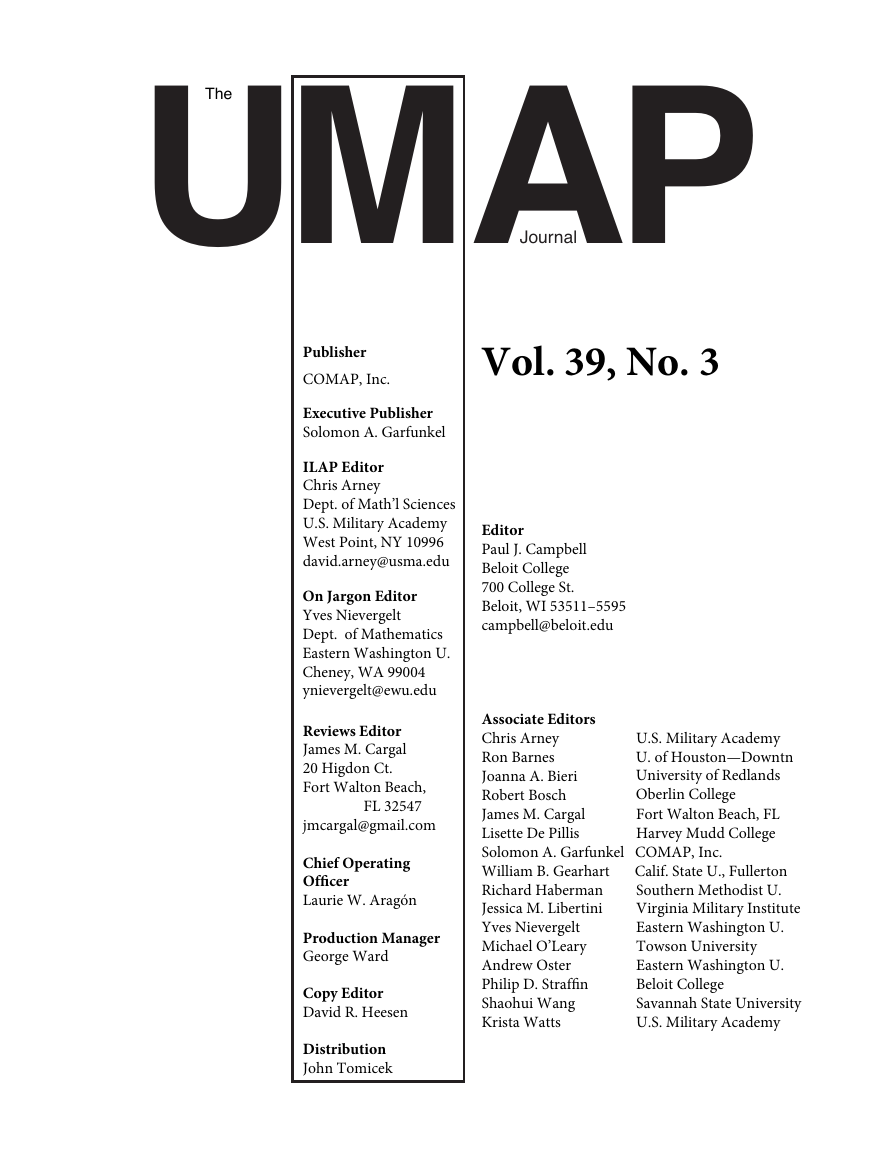
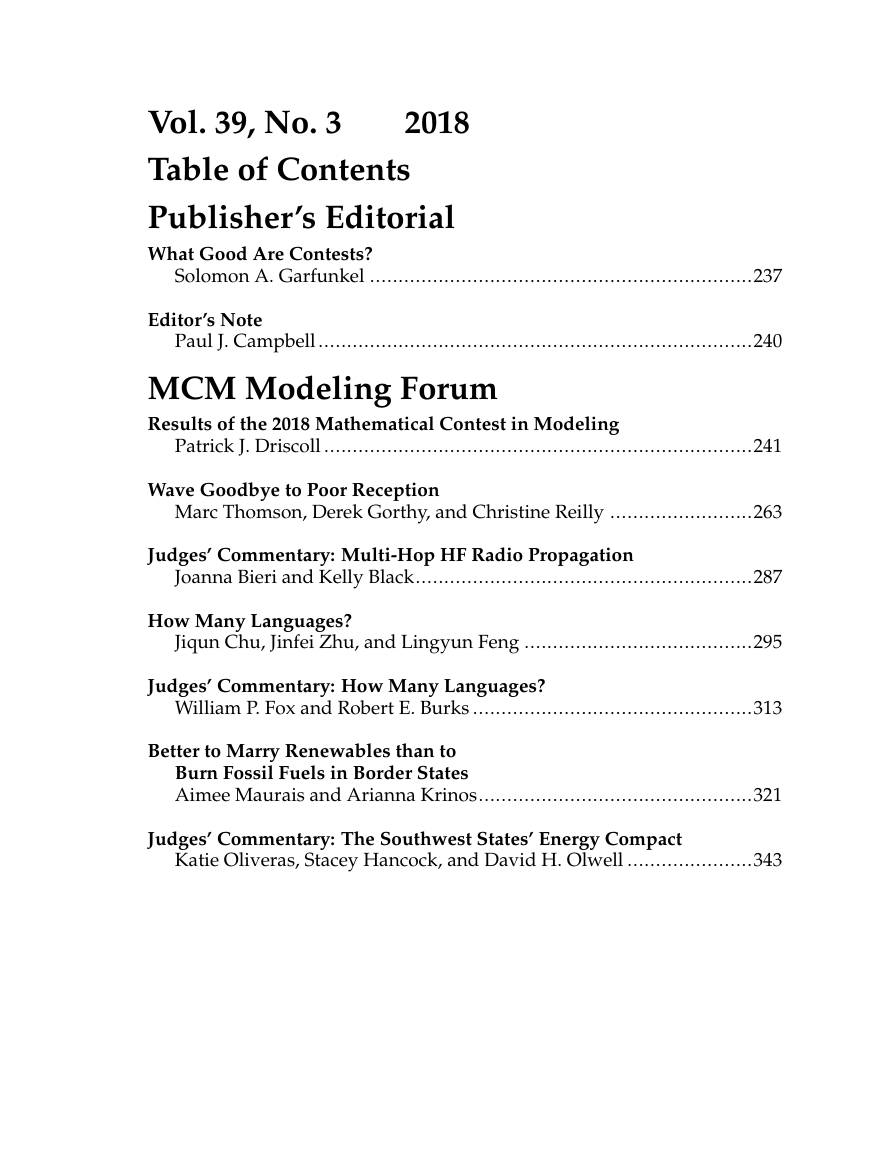

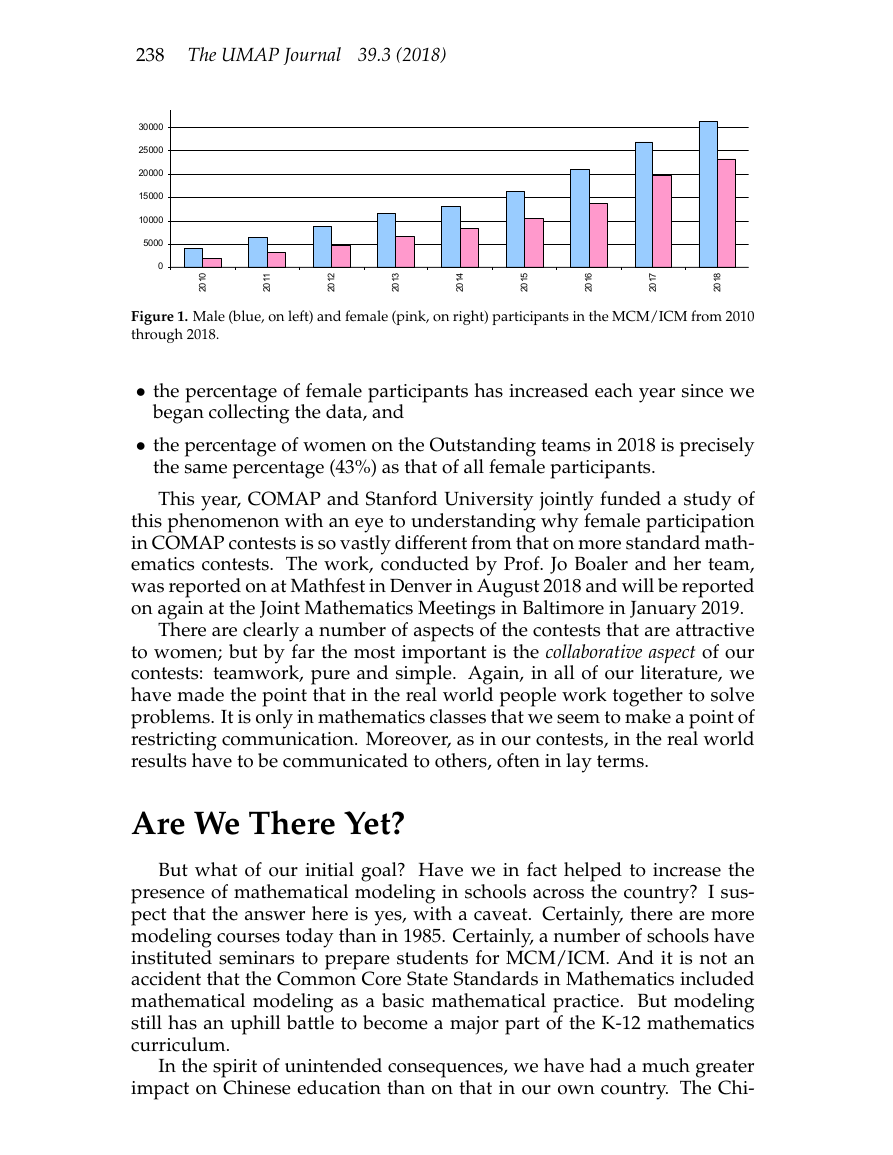
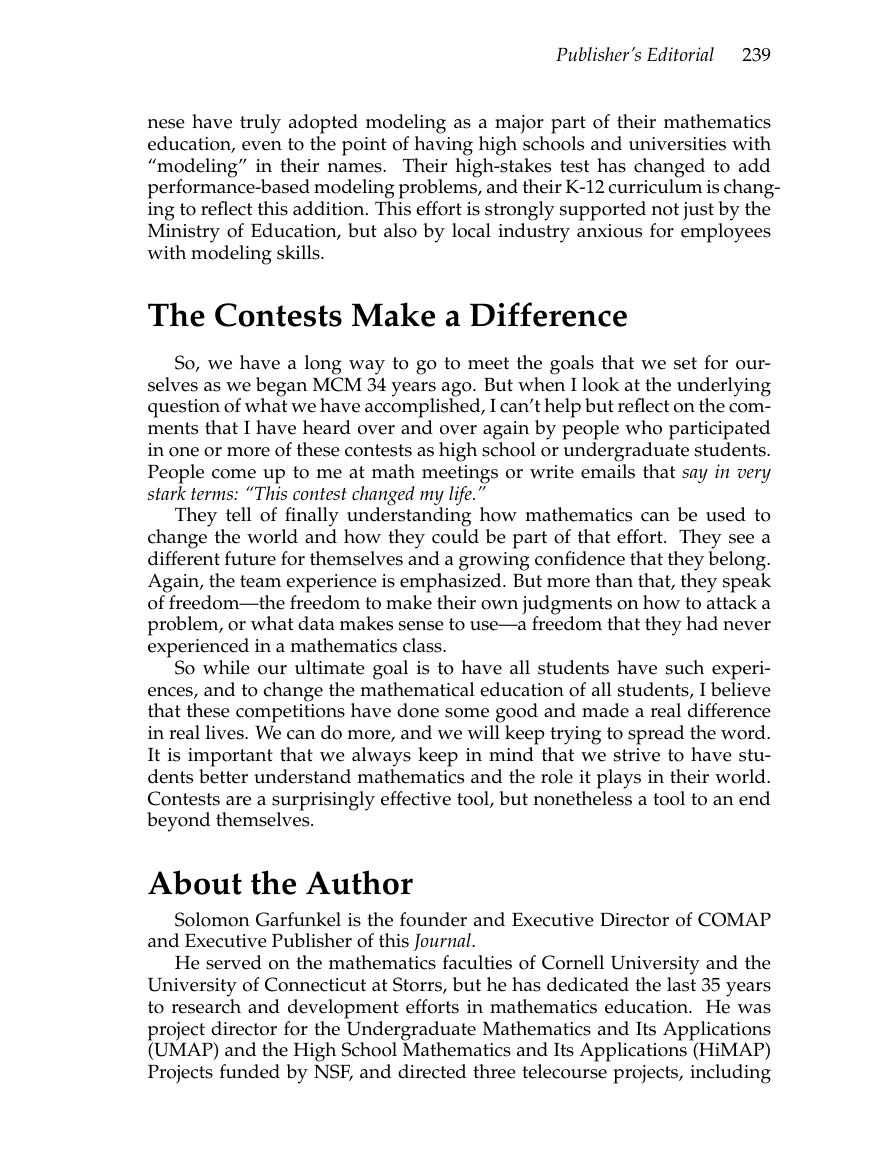
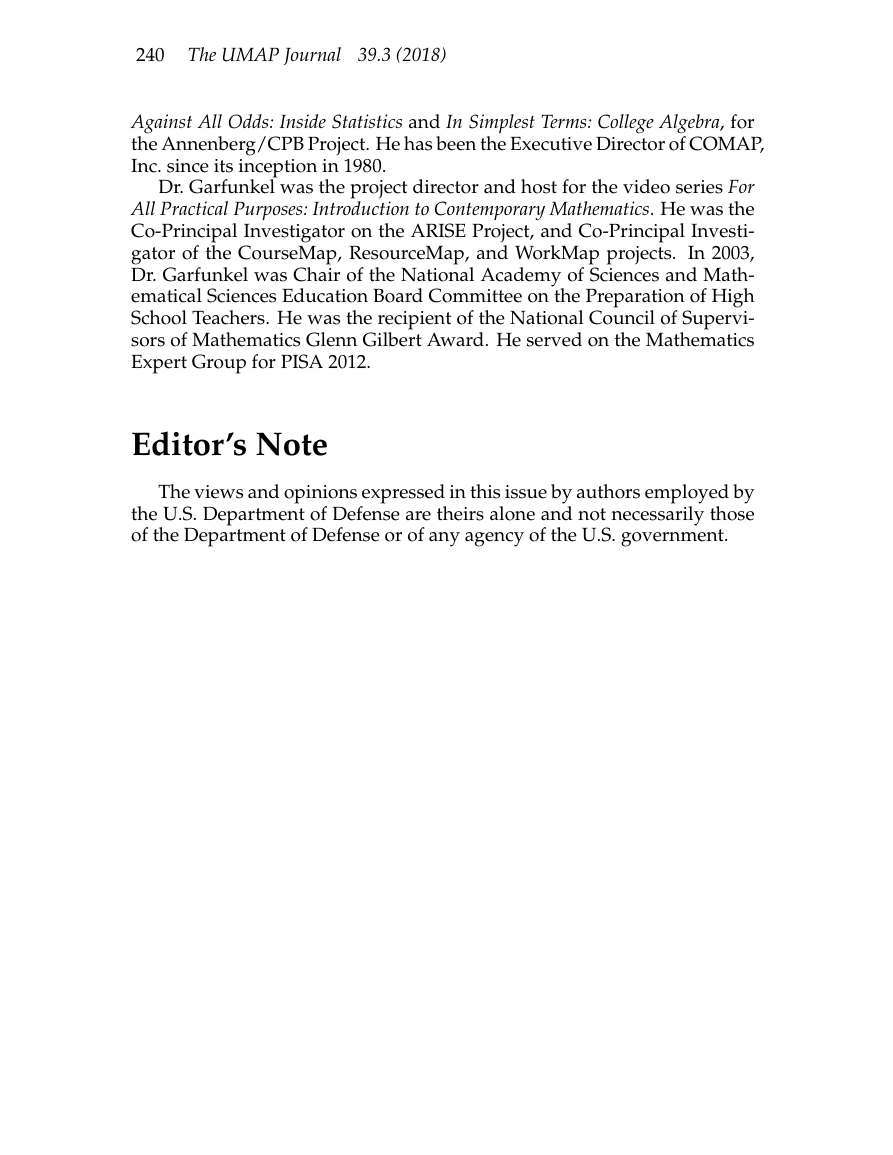
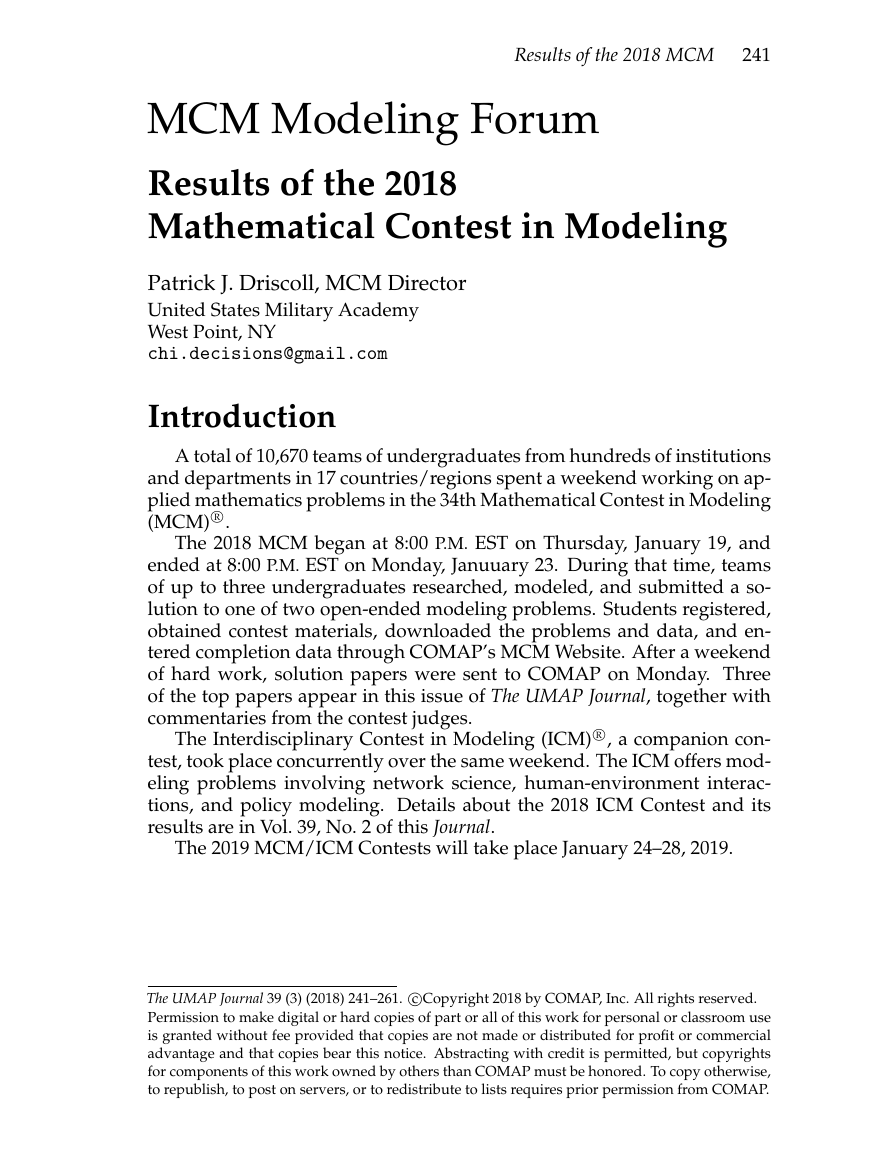
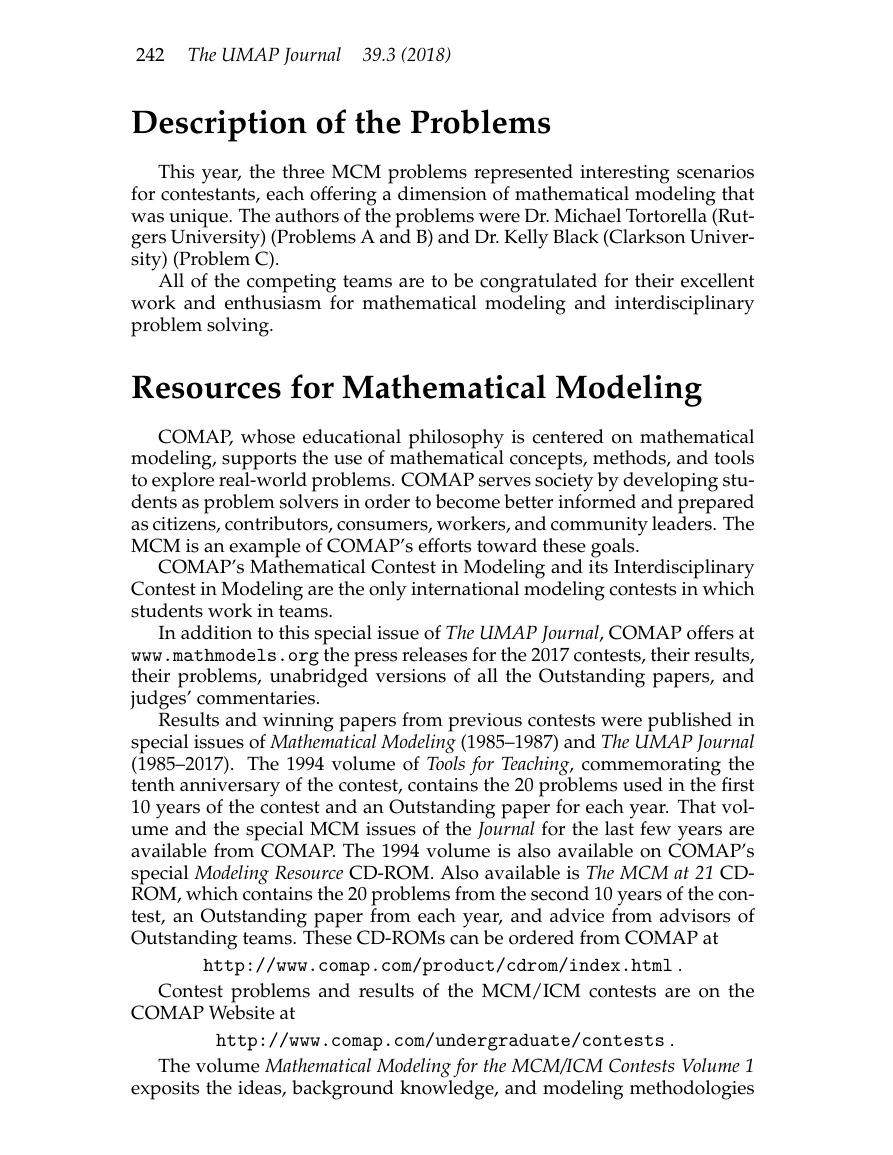








 2023年江西萍乡中考道德与法治真题及答案.doc
2023年江西萍乡中考道德与法治真题及答案.doc 2012年重庆南川中考生物真题及答案.doc
2012年重庆南川中考生物真题及答案.doc 2013年江西师范大学地理学综合及文艺理论基础考研真题.doc
2013年江西师范大学地理学综合及文艺理论基础考研真题.doc 2020年四川甘孜小升初语文真题及答案I卷.doc
2020年四川甘孜小升初语文真题及答案I卷.doc 2020年注册岩土工程师专业基础考试真题及答案.doc
2020年注册岩土工程师专业基础考试真题及答案.doc 2023-2024学年福建省厦门市九年级上学期数学月考试题及答案.doc
2023-2024学年福建省厦门市九年级上学期数学月考试题及答案.doc 2021-2022学年辽宁省沈阳市大东区九年级上学期语文期末试题及答案.doc
2021-2022学年辽宁省沈阳市大东区九年级上学期语文期末试题及答案.doc 2022-2023学年北京东城区初三第一学期物理期末试卷及答案.doc
2022-2023学年北京东城区初三第一学期物理期末试卷及答案.doc 2018上半年江西教师资格初中地理学科知识与教学能力真题及答案.doc
2018上半年江西教师资格初中地理学科知识与教学能力真题及答案.doc 2012年河北国家公务员申论考试真题及答案-省级.doc
2012年河北国家公务员申论考试真题及答案-省级.doc 2020-2021学年江苏省扬州市江都区邵樊片九年级上学期数学第一次质量检测试题及答案.doc
2020-2021学年江苏省扬州市江都区邵樊片九年级上学期数学第一次质量检测试题及答案.doc 2022下半年黑龙江教师资格证中学综合素质真题及答案.doc
2022下半年黑龙江教师资格证中学综合素质真题及答案.doc